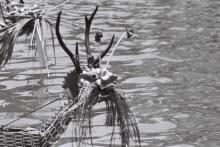Hong Kong residents, 1940-45
Primary tabs
If you're trying to trace a person living in Hong Kong during those years, there's a good chance they're included in Tony Banham's extensive research of wartime Hong Kong.
Evacuated in 1940
Although Tony hasn't listed these people on his website, he's already gathered a lot of information about them for a future book. Here's the description from the "Book 4: Future Research" page on his website:
One In A Thousand (working title): A study of the 1940 evacuation of British civilians from Hong Kong. So far this includes a listing of approximately 3,000 individuals and the ships they were on, plus details and photographs from some 30 of those involved. It attempts to describe the entire experience from the first warning that evacuation would be necessary, to the piecing together of families again after August 1945. While the fighting in Hong Kong is best seen in the context of the 3 years and 8 months of imprisonment that followed for those who survived, the latter is best understood in the context of the men's families and the uncertainties that they endured.
In Hong Kong, December 1941
His website includes snapshots of several groups that were in Hong Kong during the battle of Hong Kong. If you are looking for a person that wasn't Chinese, and was in Hong Kong at that time, you should find them on one of these lists:
- Armed Forces: Canadian Units
- Armed Forces: British Infantry
- Armed Forces: Indian Units
- Armed Forces: Hong Kong Volunteer Defence Corps
- Armed Forces: Royal Artillery
- Armed Forces: China Command & Supporting Units
- Armed Forces: Royal Navy & Royal Air Force
- Uniformed Civilians (mainly Police, but also Fire, ARP, etc.)
- Civilians
The Battle of Hong Kong, December 1941
See Tony's book "Not the Slightest Chance", which gives a day-by-day breakdown of events in the fighting.
BAAG - British Army Aid Group
Elizabeth Ride has extensive records about the BAAG, and is happy to answer questions. Her collection is now accessible in Hong Kong.
Prisoners of War (1941-1945)
Tony's third book, "We Shall Suffer There" follows the POWs' experience, again tracing events in chronological order, from capture to release.
Civilian Internees (1941-1945)
The majority of the civilians ended up in Stanley Internment Camp, though there were also groups of civilians at other locations around Hong Kong. See more resources about the civilian internees here.
Other resources
Tony also has an extensive bibliography of books about this period, including first-person recollections, and later research. It starts about half way down this page.
To get a feel for how Hong Kong looked at this time, see the Harrison Forman collection of photos taken in 1941.
If you can suggest any other good resources for researching people living in Hong Kong at this time, please leave a comment below.
Regards, David


Comments
Hong Kong Marriage Records
Hi, I am curious if it is possible to access Hong Kong marriage regiostry records online for the period 1940 to 1955?
TIA
Niall
re: Hong Kong Marriage Records
Hi,
They're not available online as far as I know. There are some ideas how to access them at: http://gwulo.com/node/9376
Regards, David